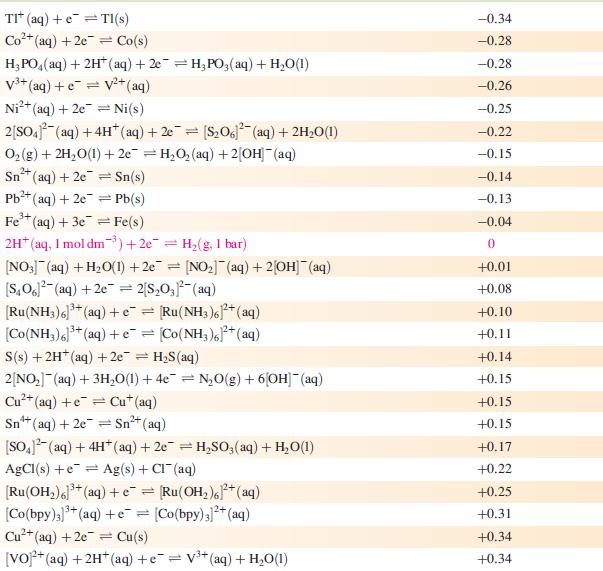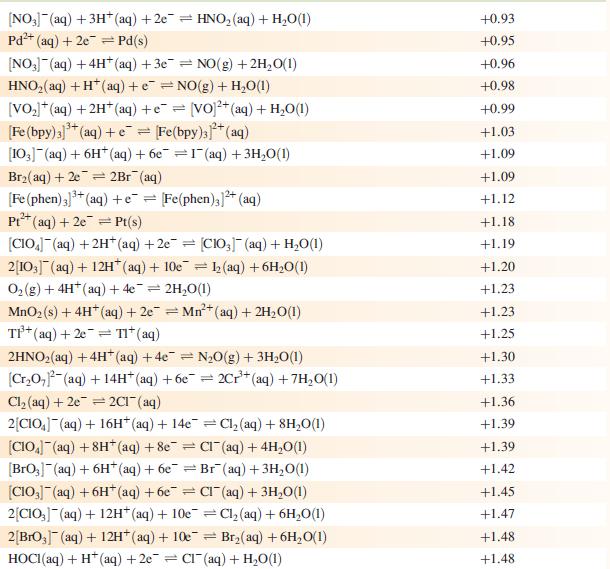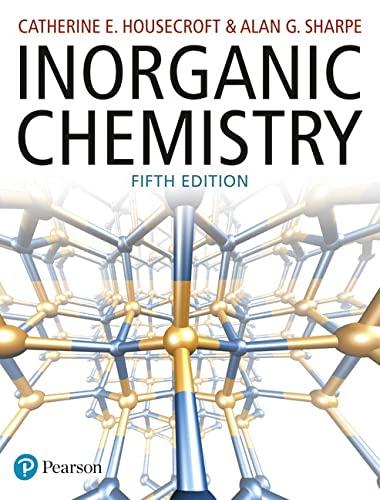(a) Use data in Appendix 11 to give a quantitative explanation why H 2 can be prepared...
Question:
(a) Use data in Appendix 11 to give a quantitative explanation why H2 can be prepared from the reaction of Zn with dilute mineral acid, but not from Cu with a dilute acid.
(b) The ion [H13O6]+ can exist in more than one isomeric form. One that has been structurally characterized is described in terms of [(H5O2)(H2O)4]+, in which an [H5O2]+ unit containing a strong hydrogen bond is centrally positioned within the [H13O6]+ ion. Draw a schematic representation of this ion and give a description of the bonding within it.
(c) The IR spectrum of gaseous SbH3 shows absorptions at 1894, 1891, 831 and 782 cm−1. Comment on why this provides evidence that SbH3 has C3v rather than D3h symmetry.
Data from Appendix 11
The concentration of each aqueous solution is 1 mol dm−3 and the pressure of a gaseous component is 1 bar (105 Pa). (Changing the standard pressure to 1 atm (101 300 Pa) makes no difference to the values of Eo at this level of accuracy.) Each half-cell listed contains the specified solution species at a concentration of 1 mol dm−3; where the half-cell contains [OH]−, the value of Eo refers to [OH−] = 1 mol dm−3, hence the notation Eo[OH−] = 1






Step by Step Answer:






